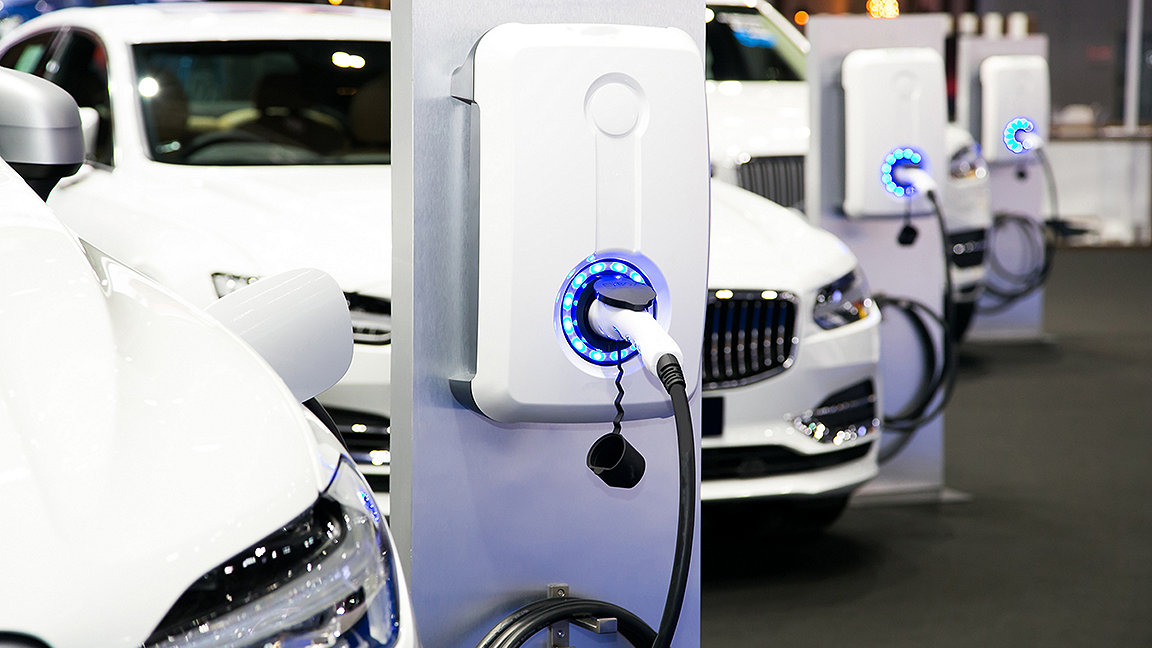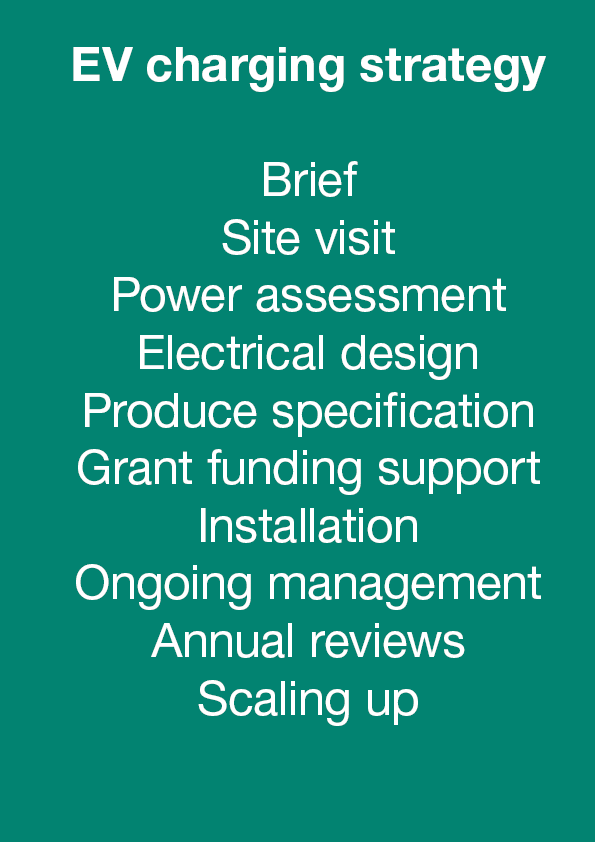
Last year was a record one for electric vehicle (EV) sales, with purchases of all-electric cars almost tripling, and those of plug-in hybrids almost doubling. Combined, these two markets accounted for more than 10% of total UK car sales. As a result, some car manufacturers are now committing to going all-electric by as soon as 2025.
With government grant funding for workplace EV charging of up to £14,000 available, commercial and residential buildings should take the opportunity to futureproof themselves. After the pandemic, commuters are more likely than ever to want to avoid public transport, making charging facilities a key feature for landlords in their bid to attract and retain tenants.
Coupled with the new era of flexible working and extended congestion zones, such as the expansion of the Ultra-Low Emission Zone in London, asset owners and managers should be devising EV charging strategies – especially where other forms of commuting such as public transport and subsidised shuttle services are not as accessible.
How to make the right choice
EV charging options can differ widely in terms of both front-end charging – e.g. speed, type of connection point, load balancing – and back-end management – e.g. billing, data capture booking functions – so working directly with a charge point manufacturer presents risks as 'off-the-shelf' options are not likely to fit the specific needs of a site.
Fundamentally, there are three different types of charger to consider, as shown in Table 1, while Table 2 gives an indication of how fast vehicles can be charged.
| EV charger type | Power rating (guideline) |
| Slow charger | < 3kW |
| Fast charger | 7-22KW |
| Rapid charger | 50-100KW |
Table 1: Power ratings of differing types of EV charger
| EV charger type | Power rating (guideline) |
| Slow charger | < 3kW |
| Fast charger | 7-22KW |
| Rapid charger | 50-100KW |
Table 2: Typical range added to EV battery per hour of charging
This is a guideline, as charging speeds will vary with each car's specification
| Rating | Range added |
| 3.7kW (slow) | < 25 km |
| 7kW (fast) | < 50 km |
| 22kW (fast) | < 145 km |
| 43̶ 50kW(rapid) | < 145 km in 30 minutes |
| 150kW (rapid) | < 320 km in 30 minutes |
Table 2: Typical range added to EV battery per hour of charging
This is a guideline, as charging speeds will vary with each car's specification
| Rating | Range added |
| 3.7kW (slow) | < 25 km |
| 7kW (fast) | < 50 km |
| 22kW (fast) | < 145 km |
| 43̶ 50kW(rapid) | < 145 km in 30 minutes |
| 150kW (rapid) | < 320 km in 30 minutes |
To ensure you choose the right EV charger and respective electrical infrastructure, you ought to consider your market, typical parking times and what exactly you want to achieve by providing facilities.
It's important to understand clearly what you are looking to achieve in both your short-term and long-term strategy, and engage an impartial EV charging specialist that can support you.
Environmental accreditation
In support of the government's commitment to net-zero carbon emissions by 2050, production of non-electric cars in the UK will halt by 2030.
To gain BREEAM credits for EV charging at present you only need to ensure that 3% of your total car parking capacity has active charge points. But it might be wise to add a mixture of ready-to-use 'active' charge points and passive ones where infrastructure is in place but the hardware for charging is not yet installed to ensure you can easily scale up when necessary.
Costs and monetisation
In your decision-making, you need to understand the ongoing costs associated with EV charging. Profit margins will depend on the price you pay per kilowatt–hour from your electricity supplier, which typically ranges between 10p and 15p per unit. This ought to be multiplied by the total you expect to use; Table 3 provides an example.
Multiple tariffs might be worth considering, so there is something suitable for each different type of user. Few charging systems will offer that functionality themselves, so often an application programming interface will be required to set varying tariffs.
| Charger type | Energy charged in a 30-minute session | Range added by a 30-minute session | Total cost at 10p/kWh |
| 7kW (fast) | 3.5kWh | 20km | 35p |
| 50kW (rapid) | 25kWh | 140km | £2.50 |
| 150kW (ultra-rapid) | 75kWh | 420km | £7.50 |
Table 3: Indicative cost to EV user of charging
| Charger type | Energy charged in a 30-minute session | Range added by a 30-minute session | Total cost at 10p/kWh |
| 7kW (fast) | 3.5kWh | 20km | 35p |
| 50kW (rapid) | 25kWh | 140km | £2.50 |
| 150kW (ultra-rapid) | 75kWh | 420km | £7.50 |
If you are looking to maximise the return on your charging infrastructure, you might also want to ensure your charging points are easily accessible, and visible on public maps such as Zap-Map so they are available to all drivers and not simply building users.
Impartial advice
Only once you have considered what the property operator is trying to achieve for their EV charging installation will you be in a position to begin devising your EV charging strategy, which should include all the elements shown on the right.
EV charging providers will manage the process from helping with client briefs and product specification through to installation and management.
Working with a specialist that takes an impartial approach will ensure you fully understand your requirements, and in turn implement a strategy to get the planning, installation and management of your project correct.
Ahead of installation, the availability of power, cabling and routing, groundworks and ensuring you have the flexibility to scale up in future are just some of the considerations that will affect your decision-making and the associated cost of your project.
Management, monetisation, billing, and user-friendliness are other key considerations if you want the EV charging strategies you implement to fulfil your objectives.

EV charging for different markets
When it comes to workplace car parking, basement garages have been a grim affair, with environments typically dark and hostile. Improving the aesthetics is therefore a great way to publicise a workplace's EV offering and gain a competitive edge.
But it must be meticulously planned to get it right, with the scope to scale up over time. The right product specification and electrical design will put you in the best position for whatever comes next.
Where car parking spaces may be minimal, it is vital to ensure your strategy is flexible, with the option of booking slots and fast charging available.
At business parks and regional offices, EV charging facilities are arguably even more important. Where other forms of commuting such as public transport are not as accessible or viable, driving to and from the workplace is vital for occupiers.
- charge points can be monetised, creating new revenue streams for service charges
- business parks and regional offices with end-of-trip charging facilities enable your occupiers to save significantly on company cars as a benefit in kind, which is particularly helpful for occupiers that may operate large vehicle fleets
- futureproofing is again vital, as EV charge point numbers will undoubtedly need to be scaled up over time. Finally, the role of EV charging infrastructure in hotels and other commercial destinations may be more beneficial than you first think. EV drivers will always plan their journeys around the availability of charging.
Upgrading a hotel's transportation charging point offering will likely lead to more bookings. Searches on agency websites such as Hotels.com will enable prospective guests to filter for hotels with charge points. Those without such facilities will become less desirable than those with, and therefore lose out on bookings.
- front-end charging capabilities
- ongoing management, revenue set-up, e.g, fixing resale tariffs for electricity, varying tariffs for different users, and marketing
- user-friendliness and visibility to attract prospective guests.
David Farr is head of operations at Electric Spinach
Readers can register for Electric Spinach webinars on the contact page
Contact David: Email | LinkedIn
Related competencies include: Sustainability, Strategic real estate consultancy
'Improving the aesthetics is a great way to publicise a workplace's EV offer'
